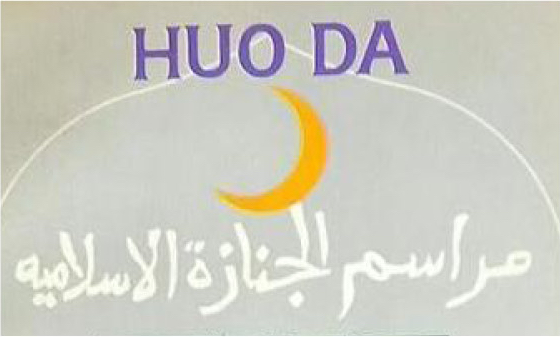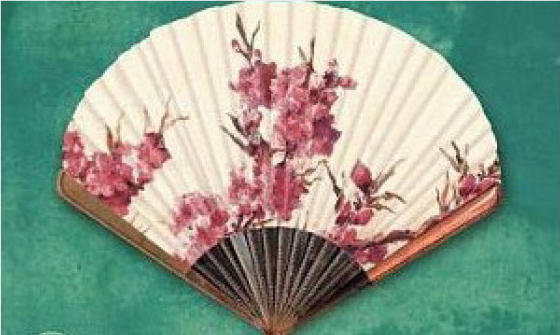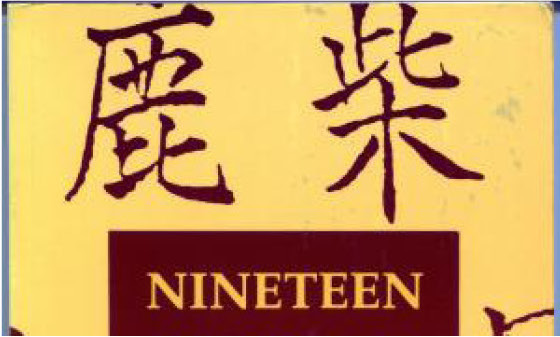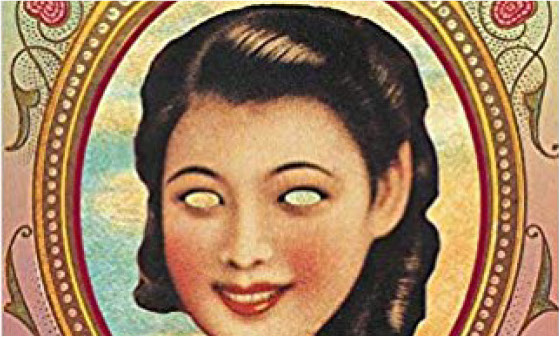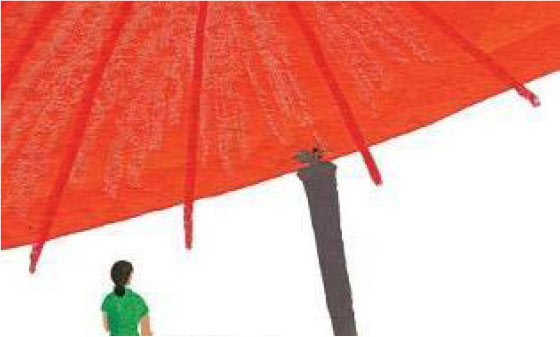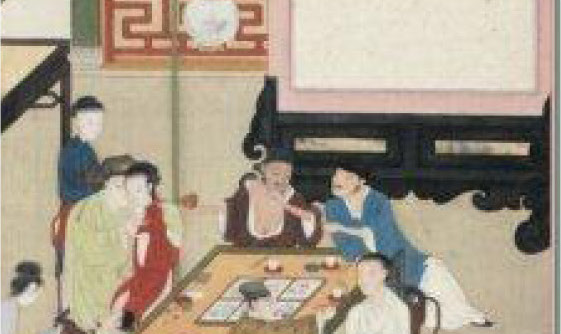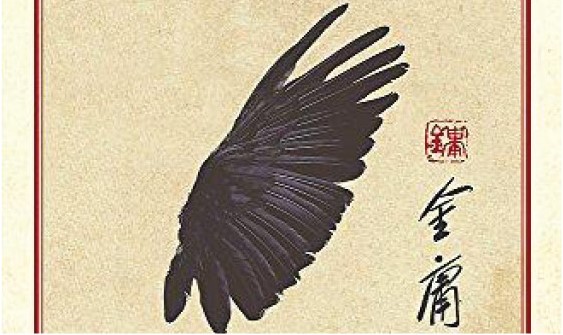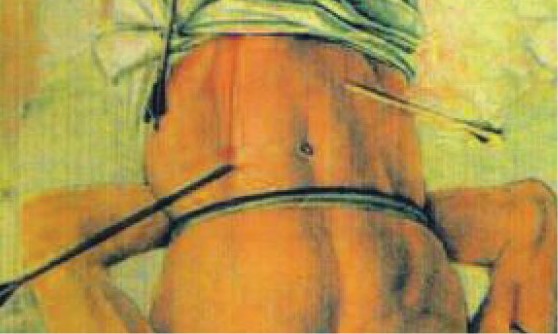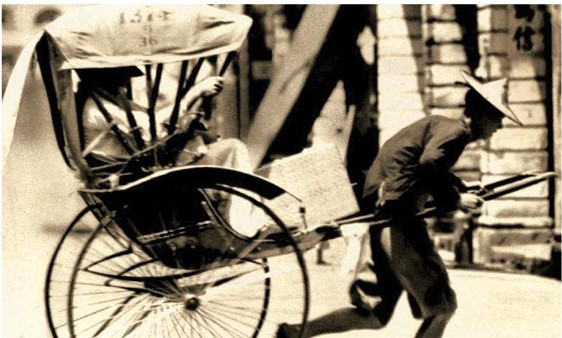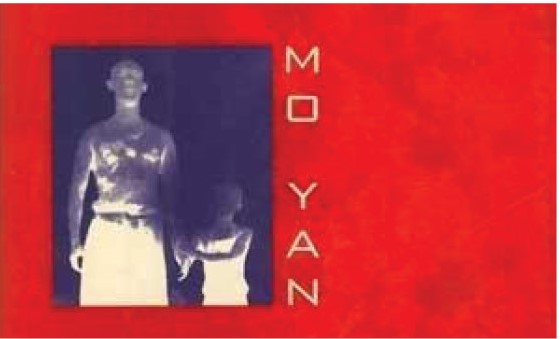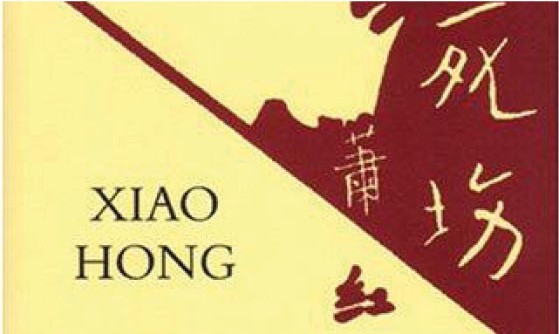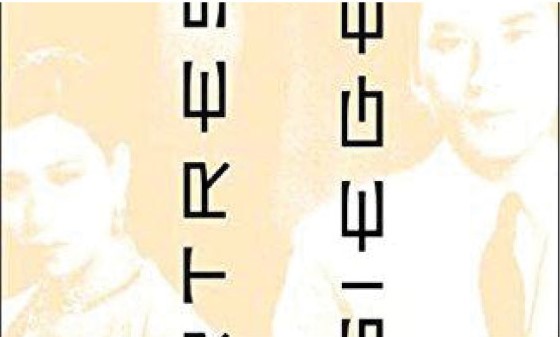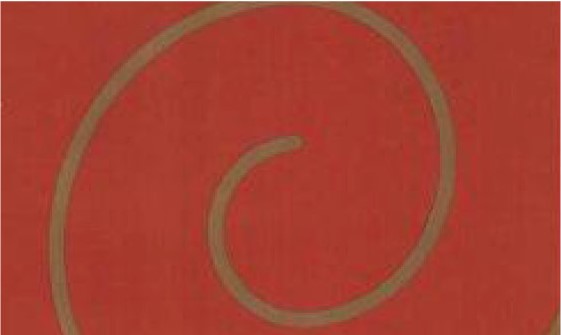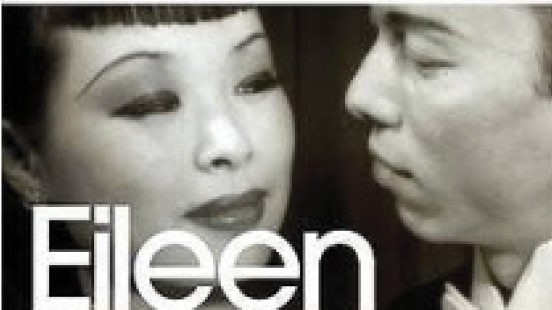The China Project Book List — sort by genre: Literature
Sort by genre:
Culture/Society/Memoir | Literature | History | Politics | Business/Tech
Sort by time period of primary subject matter:
Ancient and Imperial China | Republican Era to 1949 | Mao to Tiananmen | 1990s to Pre-Olympics | 2008-Present
~
97. Shanghai Baby
Wèi Huì 卫慧, translated by Bruce Humes (Deckle Edge, 2001)
This controversial Chinese novel tells the story of Coco, a Shanghai waitress in search of love, whose ambition it is to become a famous writer. Shanghai Baby focuses on city life and the sexual awakening of the young socialite, containing many sexually explicit scenes of Coco’s encounters with her Chinese and foreign boyfriends. Within China, this book was officially banned in 2000, with 40,000 copies publicly burned. Outside of China, it was either marketed as “that banned book” or as some Chinese equivalent of Sex and the City — often leaving foreign readers disappointed when their expectations weren’t met. Shanghai Baby isn’t considered a literary masterpiece, but it shouldn’t be categorized as chick-lit, either.
Because of all the controversy and misconception, I decided to write my thesis in Literary Studies about this book years ago, arguing that it needs to be put back in its context of the PRC in the late 1990s. Wei Hui was one of the pioneers of the so-called “beauty writers” (美女作家 měinǚ zuòjiā) wave, together with authors Mian Mian (Candy) and Chun Sue (Beijing Doll): young urban women authors who were not afraid to write about unconventional lifestyles and sexual experiences. What they did was bold, especially in 1990s China, giving voice to a new generation of strong, independent Chinese women.
— Manya Koetse
95. The Jade King: History of a Chinese Muslim Family
Huò Dá 霍达, translated by Guan Yuehua (Panda Books, 1992)
It’s a sad fact that many important novels of the late-1980s and early-1990s, a golden age for contemporary fiction, remain untranslated, or received subpar or abridged translations. The Jade King, or Funeral of a Muslim, as the title is also sometimes rendered, is one of those books. Huo Da’s novel is a family epic based on her own upbringing as a Hui Muslim in China’s capital. The story of Han Ziqi, an orphan raised by Hui and tutored in the carving of jade ornaments, ranges from the late Qing Dynasty to the end of the Cultural Revolution, and from Beijing to London. Shortly after The Jade King’s release, it did receive an abridged translation, but the book remains virtually unknown in the English-speaking world, despite its enduring popularity in its home country, where it has won the Mao Dun Literature Prize, sold close to five million copies, and been adapted for film and television.
— Dylan Levi King
93. Serve the People!
Yán Liánkē 阎连科, translated by Julia Lovell (Grove Press: Black Cat, 2008)
Set during the height of Mao Zedong’s personality cult, Serve the People! is a deceptively simple story of a passionate affair between the wife of a general and an orderly. As the Cultural Revolution rages, the lovers find excitement in breaking taboos and Mao’s busts — only to surrender to the historical forces that have swallowed up and spat out individuals throughout China. Published in 2005, the book was immediately banned for its political undertones as well as its raunchiness — which naturally increased its demand. Aside from Serve the People!, Yan Lianke is also gained notoriety for The Dream of Ding Village, a novel depicting the AIDS crisis in rural China. A prolific writer of novels, novellas, and literary criticism, he has won several prizes, including the Man Asian Literary Prize and the Franz Kafka Prize.
— Masha Borak
92. Snow Flower and the Secret Fan
Lisa See (Random House, 2005)
Snow Flower and the Secret Fan is an intricately imagined novel that seeks to portray the complex inner lives of two women during the Qing Dynasty. A subtly feminist work, at each major milestone in the lives of its two main characters, the author reminds the reader that for all the exotic trappings and social strictures of their time and place, women in Imperial China had their own voices, desires, and methods for exerting some measure of control over their lives.
The book follows the life of the narrator, Lily, beginning with her experience of footbinding in early childhood and, perhaps paradoxically, its role in helping her rise from the social class of her birth through an advantageous marriage. Footbinding is also Lily’s gateway to being instructed in “women’s script” (女书, nǔshū) — an actual writing system developed and used exclusively by women deep in Hunan Province — and, in turn, to being paired with a pen pal of sorts, the eponymous Snow Flower, who will become the single most important personal relationship of her long life. The book traces the experiences and written exchanges of these women as they navigate key life milestones and reflect on the ever-changing world beyond the seclusion of their “women’s quarters,” until the Taiping Rebellion and its aftermath threaten to overturn everything they know — including their deeply felt bond.
Snow Flower provides an important and humanizing glimpse into the lives of women in Imperial China, giving a lyrical voice to individuals who have otherwise been all too frequently overlooked.
— Siodhbhra Parkin
90. Nineteen Ways of Looking at Wang Wei: How a Chinese Poem is Translated
Eliot Weinberger (Moyer Bell Limited, 1987)
A quiet, wooded mountain; a glint of sunlight; a patch of moss. These are the components of ”鹿柴” (Lù Zhài), the poem that forms the subject of Nineteen Ways of Looking at Wang Wei (originally published in 1987, expanded and reissued in 2016). Wáng Wéi 王维 — an innovative painter, high-ranking court official, reluctant rebel, and devout Buddhist — sits alongside Li Bai and Du Fu in the triumvirate of great Tang Dynasty poets. Like their best-known works, Wang Wei’s poem has become a proving ground for many a generation of translators, and in this slender volume Eliot Weinberger collects a range of their efforts, dissecting them with fine-grained attention to detail and acerbic humor (Witter Bynner’s translation, for example, takes place in “a world where no statement can be made without a pregnant, sensitive, world-weary ellipsis”). Read Nineteen Ways of Looking at Wang Wei to appreciate the art of classical Chinese poetry, the practicalities of translation, and the subtle gradations of the English language.
— Dave Haysom
88. The Beijing of Possibilities
Jonathan Tel (Other Press, 2009)
Over the course of 12 short stories, Jonathan Tel conjures a vibrant, complex Beijing of multitudes, of idealists and thieves, migrant workers and musicians, of surreal twists and fantastical elements nevertheless grounded in the possible. Tel’s Beijing is one where a gorilla mascot is subjected to Cultural Revolution-style torment in advance of the Summer Olympics, where a boy goes on a Monkey King-like adventure to procure a cotton candy machine, and where a girl with runaway dreams transforms into a modern-day Cinderella. This is the Beijing I imagine telling people about when I talk to those who have never been here. “How wonderful to be alive in the Beijing of possibilities,” thinks the girl in the title story. I believe that sentiment, in the same way people believe in great fiction.
— Anthony Tao
82. Taipei People
Pai Hsien-yung (Bái Xiānyǒng 白先勇), latest English edition translated by the author and Patia Yasin (The Chinese University Press, Hong Kong, 2018)
The title of Pai Hsien-yung’s collection of short stories of mainlanders in exile is a clear nod to James Joyce’s Dubliners (a more overt nod when their Chinese titles are set side by side). Like Joyce, Pai uses his naturalistic portraits of urbanites in service of a larger story about exile, nostalgia, cultural stagnation, and nationalism. Pai’s Taipei people are not really from Taipei, but are merely stuck there. There are septuagenarian generals recalling the Wuchang Uprising of 1911 and professors reminiscing about the failures of the May Fourth Movement, a war widow running a noodle shop for city clerks homesick for Guilin noodles and Kuomintang aristocracy pausing over their shark’s fin soup to sing a few bars from the opera The Imperial Favorite Drunk with Wine. Just like them, Pai Hsien-yung was obsessed with a cultural China that no longer existed, but Taipei People is also thoroughly modern — as complicated and contradictory as Pai Hsien-yung’s own identity…
Pai was the son of a Hui Muslim general in the KMT’s National Revolutionary Army, and he was moved around mainland China before his family fled, first to Hong Kong and then Taiwan. He later emigrated again, heading to America in the 1960s, where he started to seriously work on Taipei People while at the Iowa Writers’ Workshop, a legendary program that has been home over the years to writers like Joy Williams, Yiyun Li, and Raymond Carver. Considering the events that were about to come on the mainland and Taiwan, with the madness of the Cultural Revolution and the collapse of KMT autocracy, Taipei People is even more tragic, 50 years after its original publication.
— Dylan Levi King
77. Bronze and Sunflower
Cáo Wénxuān 曹文轩, translated by Helen Wang, illustrated by Meilo So (Walker Books, 2015)
Bronze and Sunflower, a 400-page novel aimed at 10- to 13-year-olds, takes us back 40 years to a poor Chinese village during the Cultural Revolution. Sunflower has arrived with her artist father and other educated townsfolk, at the May 7 Cadre School (in reality, a labor camp), where the adults will clear the land, build houses, and run a fish farm. The lonely seven-year-old eventually makes friends with a mute boy called Bronze from the nearby village, Daimadi, and together they share hardships and adventures both in the village and further afield. While village life is viewed through slightly rose-tinted spectacles and there are scant details about what it’s like to grow up dirt-poor and hungry, there is plenty of wry humor; for instance, the villagers are nonplussed by the newcomers in the May 7 Cadre School, who have “their own language, their own activities, and their own ways of doing things.” Many young readers will find this an engrossing read. Cao Wenxuan won the Hans Christian Andersen Award in 2016 for best children’s writer, and Helen Wang won the 2017 Marsh Award for Children’s Literature in Translation for her translation of Bronze and Sunflower.
— Nicky Harman
75. Baptism
Yáng Jiàng 杨绛 (born Yáng Jìkāng 楊季康), translated by Judith M. Amory and Yaohua Shi (Hong Kong University Press, 2007)
The novel Baptism takes readers deep into Beijing’s 1950s literary scene, during the beginning of Mao’s purges and the unraveling of societal trust. It traces the ruination of a social class: scholars who were a source of national pride found themselves suddenly lampooned as a national embarrassment. Yang Jiang portrays self-serving relationships between colleagues, friends, and spouses, showing how individuals were manipulated into abandoning genuine expression in favor of performative political genuflection. As one character notes in the face of an allegation of theft, “These days morality has to hide its face, and dishonesty rules!” Yang’s characters write contrived self-criticisms, wrestling with how vivid, dramatic, and incriminating their confessions should be, knowing that striking the right tone is essential to their survival.
Yang Jiang and her husband, the author Qian Zhongshu (Fortress Besieged), were both consigned to “reform through labor” in the 1960s, a period she documented in her memoir A Cadre School Life: Six Chapters (a later translation renders it as Six Chapters From My Life “Downunder”). At that time, Yang was punished for working on a translation of Don Quixote, which she finished in 1978. She died in Beijing 38 years later, at age 104.
— Johanna Costigan
71. Beijing Comrades
Běi Tóng 北同 (pseudonym), translated by Scott E. Myers (The Feminist Press at CUNY, 2016)
Written by an anonymous author in 1998 and first published as an online novel, Beijing Comrades tells a love story between two men against the backdrop of political and economic upheaval in 1980s Beijing. Handong, an unsympathetic business man with political connections, falls for Lan Yu, a young, seemingly naive newcomer to the Chinese capital. Over 384 pages, the book follows their decade-long infatuation with each other, not shying away from explicit sex scenes, plenty of relationship conflict and emotional turmoil, and questions about the role of sexual identity and desire in the face of societal expectations — questions all too familiar to both current and older generations of men who love men in many other countries.
As a cultural product, no other publication may be as representative of the gay experience in China. Beijing Comrades was popularized online, turned into a movie in Taiwan, blocked from publication in China even in its safe-for-work version, and recently translated into English in cooperation with the anonymous author — though there is no authoritative version. Instead, the book speaks to the constant need for adaptation and change faced by the Chinese queer community, which will find spaces to survive no matter what.
— Katharin Tai
69. The Plum in the Golden Vase
Lánlíng Xiàoxiào Shēng 兰陵笑笑生 (a.k.a., the Scoffing Scholar of Lanling), translated by David Roy (Princeton University Press, 1997)
The Great Learning (大学 dàxué), one of the Four Books of Confucianism and a cornerstone of late Imperial education, describes how morality and proper order radiate outward from a cultivated individual. Through self-cultivation, the Great Learning says, the ancients improved their minds, their persons, their households, and ultimately their country.
This is not what happens in The Plum in the Golden Vase (金瓶梅 Jīn Píng Méi). What happens in Jin Ping Mei is precisely not this. Unlike the other “masterworks of Ming fiction” (Three Kingdoms, Journey to the West, and Outlaws of the Marsh), which recount the heroic deeds of righteous heroes, Jin Ping Mei focuses on the squalid life of Xīmén Qìng 西门庆, a vulgar merchant who devotes his time, energy, and considerable wealth exclusively to the gratification of his own baser urges: his sexual escapades, described in exhaustive and increasingly unappealing detail, have earned Jin Ping Mei a reputation as an elaborately scandalous work of pornography. The rarity of good editions — the novel has been banned (with varying degrees of success) for most of the 400 years since its first printing, and unbowdlerized texts are still hard to find in the PRC — has probably contributed to this misunderstanding, as have the age and obscurity of the novel’s language and the magpie’s nest of allusions and quotations that make up much of the book. In fact, the sex scenes for which the novel is infamous account for less than 1 percent of the work as a whole, and seem to have been intended to complement the other perversions — of justice, of morality, of proper social order — that the anonymous author documents with the same pitiless clarity. Ximen Qing debauches, ravishes, and whores his way through much of the novel, but he also cozens, suborns, and climbs to heights of wealth and access that no one of his character or social status should ever have.
For an educated reader of the late Ming Dynasty, the conclusion of the novel — the collapse and dispersal of the Ximen household, juxtaposed with the fall of the Northern Song Dynasty to the Jurchens — would have come as no surprise, and not just because the Northern Song had ended five hundred years previously. Ximen Qing and his rapacity are symptoms, not causes, of a terminally sick society. Despite its Northern Song setting, which it borrows (along with its main characters and much of its first 10 chapters) from Outlaws of the Marsh, Jin Ping Mei is transparently about the late 16th century world in which its author and its first readers lived. The fashions, institutions, and characters are all straight out of the late Ming — the author’s eye for detail has made the book an important resource for historians of the period — as are the social ills it documents.
Imagine a world where the people in power are every bit as venal and corruptible as the merchants they officially despised. Imagine a state that imprisons and exiles the just. Imagine a society in such complete moral free-fall that the only imaginable goal is more. How long can it survive before the Jurchens show up? How long does it deserve to?
— Brendan O’Kane
67. To Live
Yú Huá 余华, translated by Michael Berry (Anchor, 2003)
Yu Hua is known for stories that capture an uncanny mix of comedy and tragedy in the lives of ordinary people in extraordinary circumstances. His seminal novel To Live chronicles the life of Xu Fugui, a hapless witness and participant in some of contemporary China’s most iconic historical junctures, from the tail end of imperial China through the Cultural Revolution. The scope and tone of the novel resembles Forrest Gump, another famous work of fiction whose titular character stumbles through decades of tumultuous change. To Live is a story full of heartbreaking tragedy that is deliberately devoid of maudlin sentimentality. By juxtaposing unadorned, matter-of-fact language against senseless horrors caused by rash decisions made by China’s political pantheon, Yu paints an extremely sympathetic portrait of China’s humble 老百姓 (lǎobǎixìng — “the people”), of their resilience and resignation. Though Fugui’s life is marred by loss and trauma, his capacity to accept the enormity of the suffering in his life will leave the reader in awe.
— Frankie Huang
66. Last Quarter of the Moon
Chí Zijiàn 迟子建, translated by Bruce Humes (Harvill Secker, 2013)
Jiang Rong’s blockbuster Wolf Totem and Chi Zijian’s Last Quarter of the Moon were published within about a year of each other in the mid-2000s. Jiang’s book, a bloodthirsty prescription for national renewal that praised the nomadic Mongolian spirit, played fast and loose with the facts, and was attacked as “fascist,” went on to sell four million copies within a year. Chi’s haunting novel recording the past century of Evenki life in Inner Mongolia received a far more muted reception outside of literary circles, despite rendering a more intricate and evocative picture of nomadic life.
The author put in countless hours studying the Evenki, who now number in the tens of thousands and live mostly in the Evenki Autonomous Banner, close to where the Mongolian, Inner Mongolian, and Russian borders meet. The unnamed narrator, an elderly woman descended from tribal chieftains, describes the Evenki’s move from a nomadic life — herding reindeer across the steppes and hunting in the boreal forest — to settlement in permanent townships, and her own fight to stay connected to the mountains that she was raised in. Reindeer may not be as marketable as wolves, but Chi Zijian’s story is just as gripping as Jiang Rong’s, with none of his tiresome didacticism.
— Dylan Levi King
63. The Rose of Time: New and Selected Poems
Běi Dǎo 北岛, edited by Eliot Weinberger, with translations by Bonnie McDougall, David Hinton, and Eliot Weinberger (New Directions, 2010)
Bei Dao began writing poetry during the Cultural Revolution, founded the first unofficial literary journal in the People’s Republic of China in 1978, became one of the country’s best known poets in the ’80s, and then was in exile after the Tiananmen Square massacre in 1989; he moved to Hong Kong in 2007 and has been allowed to travel in mainland China following a stroke in 2012, and remains one of the best known poets writing in Chinese today — and one of the leading lights of Chinese literature. The Rose of Time presents the most moving and innovative selections of his oeuvre up to 2010, from the “I — do — not — believe” of “The Answer” from the ’70s to his more recent “Black Map,” with the lines “I go home — reunions / are one less / fewer than goodbyes.” For an entryway either into Bei Dao’s own output over the last four decades or where contemporary Chinese poetry is, The Rose of Time is indispensable.
— Lucas Klein
61. A Hero Born: Legends of the Condor Heroes Vol. 1
Jīn Yōng 金庸 (pen name of Louis Cha Leung-yung [查良鏞 Chá Liángyōng]), translated by Anna Holmwood (Maclehose Press, 2018)
Jin Yong has had a greater influence on the literature and culture of the Sinosphere than any writer of his generation. His martial arts-driven wuxia epics earned the praise of literary theorists and his fellow writers (with the notable exception of Wang Shuo, who memorably beefed with Cha in the early-2000s), while also selling into the hundreds of millions of copies and winning a devoted following among politicians, gangsters, schoolchildren, and taxi drivers.
Anna Holmwood’s translation of A Hero Born, part of an expected set of four volumes, is a rare chance to read the author’s work. Set in the 13th century, the novel tells the story of two patriotic sons cast into exile in barbarian lands. With Cha’s identity as a mainlander in exile in Hong Kong, it was not hard to read political allegory into the book’s story of ethnic identity. Just as Chinese internet users reference characters and quotations from the Four Classic Novels to evade censorship while discussing contemporary politics, so too do they make allusions to Cha’s 15 novels — especially Legends of the Condor Heroes.
— Dylan Levi King
57. Iron Moon: An Anthology of Chinese Worker Poetry
Translated by Eleanor Goodman (White Pine Press, 2016)
After publication, Iron Moon became the most widely reviewed book of Chinese poetry in English translation in years. In part this is because of its themes: Chinese factories create the world’s goods, and so many in the world will be curious about Chinese factories. But also it’s because of the quality of the poems, as translated by Eleanor Goodman. Most renowned of these poets is Xu Lizhi, a Foxconn worker who committed suicide in September 2014, with his most famous poem “I Swallowed an Iron Moon”: “I swallowed an iron moon / they called it a screw // … // I can’t swallow any more / everything I’ve swallowed roils up in my throat // I spread across my country / a poem of shame.” But also included is Zheng Xiaoqiong, a poet from Sichuan who worked in factories in Guangdong and now wins awards for her poetry and is invited to international poetry festivals. In these poems, tropes of classical Chinese poetry get reborn and put to new use: images of “moonlight” (月光 yuèguāng) indicate the poets’ homesickness, but also indicate that these industrial workers are part of the “moonlight clan” (月光族 yuèguāng zú), or class of people whose money is all spent up by the end of the month.
— Lucas Klein
55. Ruined City
Jiǎ Píngwá 贾平凹, translated by Howard Goldblatt (University of Oklahoma Press, 2016)
Jia Pingwa’s Ruined City hit the Chinese literary scene like an atom bomb upon publication in 1993. The grim, funny portrait of literary bad boys was banned almost immediately, and remained officially out of print until 2009. Roasted by critics as pornographic and self-indulgent upon its release, the reputation of the novel only grew during the 16 years it circulated in samizdat editions and online bootlegs. Apart from being heralded as one of the finest novels of the past century, it was also credited as a sex-ed manual.
The novel’s anti-hero Zhuang Zhidie, a stand-in for Jia himself, scythes through the literary and political scene in Xijing, a thinly veiled version of Xi’an, tangling with rivals, having his palms greased by local bureaucrats, and still making time for dalliances with a lineup of adoring female fans. Ruined City is aggressively modern in its concerns, but borrows the forms of late Ming and early Qing vernacular novels. The dense prose of the original, full of classical allusions, as well as political jargon, makes Howard Goldblatt’s translation all the more impressive.
— Dylan Levi King
53. Border Town
Shén Cóngwén 沈从文, translated by Jeffrey C. Kinkley (Harper Perennial, 2009)
Shen Congwen, born at the turn of the last century, was a marginal figure in the New Culture Movement of the 1920s, and perhaps because of his age and his political leanings (or lack thereof), never attained the same level of renown as writers like Lu Xun. Border Town, considered one of Shen’s masterworks, is set in West Hunan and draws deeply from the well of local culture to tell the story of local girl Cuicui and her courtship by two brothers. Shen’s career as a novelist was ended in 1949 by a string of purges, but when he was rehabilitated in the late 1970s, his writing was rediscovered by a new generation. The roots-seeking movement of the 1980s, whose writers proclaimed the need to return to native place and local culture, took Shen Congwen as their model. The literary DNA of Shen Congwen’s Border Town can be found in the most important novels of the past 40 years, including Jia Pingwa’s Qinqiang, Han Shaogong’s A Dictionary of Maqiao, and Mo Yan’s Red Sorghum.
— Dylan Levi King
50. Notes of a Desolate Man
Chu T’ien-wen (朱天文 Zhū Tiānwén), translated by Howard Goldblatt and Sylvia Li-chun Lin (Columbia University Press, 1999)
Chu T’ien-wen, the daughter of Taiwanese literary luminary Chu Hsi-ning (朱西甯 Zhū Xīníng), got her start as a writer of maudlin romances on classical themes before breaking into the world of film, collaborating with Hou Hsiao-hsien (侯孝贤 Hóu Xiàoxián) and other auteurs of the New Wave cinema movement. Her work as a screenwriter, as well as the new political and cultural environment that came with the lifting of martial law in 1987, shook her loose from imperial Chinese nostalgia and drove her to create a new body of work that was focused on the unique experiences of urban Taiwanese.
Notes of a Desolate Man, published in 1994, tells the story of a gay man approaching middle age, who has flown from Taipei to Tokyo to care for a friend dying of AIDS. It’s a deeply sad, deeply passionate book that sprinkles its explorations of urban ennui, aging, sex, and the limits of radical politics with references to Lévi-Strauss, Fellini, Ozu, and classical poetry. This is among the finest records of middle age ever written, and a keen portrait of fin de siècle Taiwan.
— Dylan Levi King
49. Rickshaw Boy
Lǎo Shě 老舍, translated by Howard Goldblatt (Harper Perennial, 2010)
Xiangzi just wants a new rickshaw with which to ply an honest trade. But 1920s Beijing (“Beiping” at that time) is tough, and he is thwarted by war and camels, swindlers and women, love and disease. Hope flickers in Xiangzi’s misguided sense of purpose, but even that is progressively snuffed out by a society that refuses to reward virtue, ambition, or effort. Rickshaw Boy is a classic, a popular novel by one of China’s greatest 20th-century writers, with an earlier translation even becoming a bestseller in the U.S. Its depictions of the city, from its brothels to gates, its alleyways to still-recognizable landmarks like Tiananmen and the Temple of Heaven, are to be savored. However, be warned: read in the context of Lao She’s eventual suicide amid persecution during the Cultural Revolution, this “darkly comic” book at times feels simply sad. Rickshaw Boy isn’t merely a critique of individualism — it shows us how little agency any of us have, yoked as we are to our machines, bearing the weight of the world’s epithets and perpetually running in circles.
— Anthony Tao
46. Soul Mountain
Gāo Xíngjiàn 高行健, translated by Mabel Lee (Harper Perennial, 2000)
“What I want to say here is that literature can only be the voice of the individual and this has always been so,” Gao Xingjian said in his acceptance speech for the 2000 Nobel Prize. Gao’s voice is resounding in Soul Mountain, his most famous work, a part-autobiographical, part-fictional account of one man’s journey along the Yangtze River in search of the fabled mountain Lingshan. Gao, who became a French citizen in 1998, fled the oppressive political environment of Beijing in the 1980s to travel the remote mountains of Sichuan Province in southwest China. Soul Mountain was the result, a free-flowing, ecstatic, sometimes stream-of-consciousness novel that traces an unnamed protagonist’s physical and spiritual quest for inner peace and freedom. The novel is a rarity in the Chinese literary landscape, where studies of the human self are vastly outnumbered by plot-driven narratives.
— Bingxuan Wang
44. Red Sorghum
Mò Yán 莫言 (pen name for Guǎn Móyè 管谟业), translated by Howard Goldblatt (Viking Adult, 1994)
Red Sorghum is the first novel by 2012 Nobel laureate Mo Yan. It recounts the convoluted — and non-chronological — story of two generations of a particular family, in the voice of a member of the family’s third generation, from Gaomi county, Shandong Province. In between pursuing personal vendettas and other local politics, Grandma, Grandpa, and Father own and run a distillery, which is famous for making liquor out of the locally-grown red sorghum. It is impossible to summarize succinctly, but suffice it to say there are exciting descriptions of banditry and guerrilla warfare, as well as love and betrayal. The novel spans the lawless Warlord era and into the Japanese invasion of China during the Second World War, with also a few moments of the narrator’s present in the Communist period. Gaomi, which is a fictionalized version of Mo Yan’s own birthplace, serves as the setting for many of his novels and is often compared to Faulkner’s Yoknapatawpha County. The Nobel committee that selected Mo Yan praised him for a prose style of “Hallucinatory Realism” — this seems to be a way of indicating a Magical Realist style without using that term, to which Mo Yan has objected in the past — which is on full display in Red Sorghum.
— Andrew Stuckey
42. Wandering on the Way
Chuang Tzu (Zhuāngzi 庄子), translated by Victor Mair (University of Hawaii Press, 1998)
This is a wonderfully idiosyncratic translation of one of Daoism’s foundational texts. Victor Mair believed that too many translations of Zhuangzi lose the whimsical and even comic nature of the original text, so he created a version that is lively and highly colloquial. It reads like a contemporary text, which is appropriate, given Daoism’s eternal themes about man and nature, philosophy and consciousness. And language: “A rabbit-snare is for catching rabbits; once you’ve caught the rabbit, you can forget about the snare. Words are for catching ideas; once you’ve caught the idea, you can forget about the words. Where can I find a person who knows how to forget about words so that I can have a few words with him?”
— Peter Hessler
41. Frontier
Cán Xuě 残雪, translated by Karen Gernant and Chen Zeping (Open Letter, 2017)
Can Xue prides herself on challenging readers with her experimental fiction, and challenge she does with Frontier, originally published in 2008 and translated in 2017. The novel is set in the mysterious Pebble Town, teeming with wildlife, where people make references to nearby Snow Mountain and a tropical garden in the sky. Each chapter focuses on the interactions between a few characters, drawing the reader into a beautiful and frightening world where everyone tries to figure out why they have come to work at the seemingly purposeless Design Institute and what their relationship is to one another. The reader remains in a haze as the events unfold, but the direct narration and compelling imagery is a powerful draw, immersing us in the strangeness and wide open sky.
— Lily Hartzell
38. The Field of Life and Death & Tales of Hulan River
Xiao Hong 萧红 (pen name of Zhāng Nǎiyíng 张乃莹), translated by Howard Goldblatt (Cheng & Tsui, 2006)
Chinese literature owes a great debt to female authors, who have often been dismissed as sentimental writers incapable of broadening their vision beyond trifling stories about love affairs, family issues, and motherhood. This gendered narrative of women’s writing is laughably flawed, as this two-book collection by Xiao Hong, one of China’s first and foremost feminist writers, demonstrates.
Xiao’s writing career lasted only eight years, before she died at age 31, but she published prolifically in that short span. At the heart of her work is women who lead lives of loneliness, desperation, and oppression in a world where patriarchy is seen as “natural.” She published her debut novel, The Field of Life and Death, when she was only 23, after having experienced a series of devastations, including the death of her mother and abandonment by her longtime partner, who left her while she was pregnant. Drawing inspiration from her own suffering, Xiao weaves together three family sagas in the Harbin countryside, spanning several decades. Tales of Hulan River, published five years later, is an autobiographical fiction based off Xiao’s childhood in a small town called Hulan, filled with rural villagers seeking their identities in a time of change.
— Jiayun Feng
35. The Song of Everlasting Sorrow
Wáng Ānyì 王安忆, translated by Michael Berry and Susan Chan Egan (Columbia University Press, 2008)
The Song of Everlasting Sorrow is an exquisite and melancholy novel that is part of the “roots-seeking” (寻根 xúngēn) movement of post-Cultural Revolution China. It explores the meaning of Shanghainese identity by tracing the life of a young Shanghai woman over four decades, from post-World War II to reform and opening up. It probes the longtang, the crowded, maze-like alleys of Shanghai’s working-class neighborhoods, where the protagonist, Wang Qiyao, was born. Qiyao is aware of her own beauty and seeks fame, but must endure the vicissitudes of modern Chinese history — to say nothing of the men she loves. The novel won the 5th Mao Dun Literature Prize in 2000 and was later adapted into a movie and TV series.
— Kimberly Jin
34. Fortress Besieged
Qián Zhōngshū 钱钟书, translated by Jeanne Kelly and Nathan K. Mao (Gardners Books, 2005)
Like many of his literary peers in the Republican Era, Qian Zhongshu received a fine education, first at Tsinghua, then at Oxford and the University of Paris, but, unlike so many of his fellow writers, he eschewed explicit political work for pointed satire of middle-class neuroses. In the words of Christopher Rea, translator of the author’s Humans, Beasts and Ghosts: Qian’s goal was to establish an “autonomous republic of letters.” Fortress Besieged tells the story Fang Hongjian, his voyage back to China with a fake diploma, his adventures in courtship and marriage, and his attempts to snag an academic job. The “fortress” that is besieged in the title is the institution of marriage, with Fang throughout the book trying to storm the gate or free himself. The book’s humor, wit, and keen insights into human nature made it an instant classic.
— Dylan Levi King
31. Three Kingdoms: A Historical Novel
Luō Guànzhōng 罗贯中, translated by Moss Roberts (Foreign Language Press, 2011)
Said to be 70 percent history and 30 percent fiction, this riveting Ming Dynasty retelling of the events surrounding the fall of the once-great Han Dynasty deserves its place as one of China’s Four Great Novels (along with Dream of the Red Chamber, The Water Margin, and Journey to the West). Of the four, Three Kingdoms — we recommend the English translation of that name by Moss Roberts — arguably reveals the most about the Chinese political mind. It centers, in its first half, on the three sworn brothers Liu Bei (a distant relation of the embattled Eastern Han imperial family), Guan Yu (who would go on to be deified as the God of War), and the bruiser Zhang Fei, the Luca Brasi of the Three Kingdoms world. The cunning and ruthless Cao Cao; the brilliant strategist Zhuge Liang, and hundreds of other characters populate this tale. But peppered throughout the book are clever stratagems, subtle psychological manipulations, and feats of heroism and sacrifice. It’s really about how to govern, how to deploy talent, and how to wage war both on the field and in the mind. It’s this that makes the novel so enduring and memorable.
— Kaiser Kuo
27. Monkey
Wú Chéng’ēn 吴承恩, translated by Arthur Waley (The John Day Company, 1943)
Monkey is the book for those convinced they don’t like either Journey to the West (西游记) or its mercurial, rebellious, transdualistic smart-ass protagonist, Sun Wukong (a.k.a. the Monkey King, a.k.a. “Aware of Vacuity,” a.k.a. Great Sage, Equal of Heaven, a.k.a. Buddha Victorious in Strife…the list goes on). It is a picaresque, allegorical, compact folk novel full of notable characters from Chinese myth, from philosophers like Lao Tzu (Laozi) to beloved bodhisattvas like Kuan-yin (Guanyin). Is there adventure? Oh you bet. After upsetting a Peach Banquet and consuming magical fruits and pills, Monkey tussles with Buddha, wards off calamities, wields scimitars, claps back at immortals, lodges many-a-threats to cudgel fools upside the head, and eventually finds purpose with a band of misfits accompanying a monk on his journey to India.
What games are played, poems recited? What trouble befalls them? If you are interested in the answers, dear reader, listen to what is told in the next chapter.
— Anthony Tao
25. Love in a Fallen City
Eileen Chang (Zhāng Àilíng 张爱玲), translated by Karen S. Kingsbury (NYRB Classics, 2006)
Love in a Fallen City is a collection of six short stories by charismatic writer Eileen Chang. First published in the 1930s and ’40s, her stories are about love, longing, troubled family lives, and political and sexual ambiguity amid social constraints and upheaval. In her own words, she only tried to describe “the little things that happen between men and women.”
Little things they may be, but they’re cannily observed, psychologically fraught, full of intrigue, and expressed with Chang’s trademark poise. The story “Love in a Fallen City” is among Chang’s most popular. In it, a handsome couple — Fan Liuyuan, a playboy who grew up in England, and Bai Liusu, a divorcee stuck in a household dominated by her father’s extended family in Shanghai — engage in a game of hide and seek, each with their own agenda: he to regain his Chinese identity, she to remarry. It’s war that pushes them together and perfects their love.
I’d also recommend Lust, Caution, Chang’s most controversial book (now a movie by Ang Li). I first encountered Chang’s works in the mid-1980s when I was a factory worker in Nanjing, seeking an escape through reading and writing. I was immediately fascinated by her characters: well-drawn, complex, and often desperate, differing dramatically from the so-called “tall, big, and perfect” characters of revolutionary literature or the one-dimensional protagonists in the “scar literature” of the time, when the protagonists were all victims lacking moral ambiguity. A forerunner of Chinese modernist writing, Chang’s prose is sharp and imaginative, winning her millions of fans all over the country.
— Lijia Zhang
19. The Three-Body Problem
Liú Cíxīn 刘慈欣, translated by Ken Liu (Tor Books, 2014)
Liu Cixin was born in 1963, and came of age during some of the most chaotic years in China’s recent history, which no doubt shaped him as a writer. As the first Chinese author to receive the prestigious Hugo Award, Liu has single-handedly put Chinese science fiction on the international map, winning a legion of fans that includes the likes of Barack Obama and Mark Zuckerberg. In The Three Body Problem, the first of the Remembrance of the Earth’s Past trilogy, Liu weaves familiar science fiction tropes with the devastating events of the Cultural Revolution (even as Liu insists his works are not commentary, but escapism from reality). The result is a searing epic that explores the brutal psychological trauma caused by dehumanizing political struggle, amplified by the existential dread of an encroaching alien civilization with annihilation on their minds. The stakes are high from the onset, as important military officials meet in secret, scientists die mysteriously, and conflicting motives clash. As the novel progresses, Liu unravels the horrors and tragedies of the past and present, all to build up to a moment of judgment that will determine the fate of humanity. To read The Three Body Problem is to be gripped by terror and wonder at the world Liu has created, and be awed by the wide scope of his fatalistic imagination.
— Frankie Huang
6. The Good Earth
Pearl S. Buck (John Day, 1931)
The Good Earth is a sweeping novel in the tradition of English literary realism, but at its core is unmistakably Chinese. At her acceptance speech for the Nobel Prize for Literature in 1938, titled “The Chinese Novel,” Pearl S. Buck praised the Chinese novelist as a writer for the people: “His place is in the street. He is happiest there.” She concluded, “He must be satisfied if the common people hear him gladly. At least, so I have been taught in China.”
She was well taught. For the first half of her life, Buck felt more at home in China than anywhere else. She learned classical Chinese at an early age, attended school in Shanghai, and moved to Anhui Province soon after her first marriage, an experience that depressed her but provided the basis for The Good Earth, which was published in 1931 to critical acclaim and commercial success. The novel begins with Wang Lung’s marriage to O-lan, hardscrabble characters who form the story’s backbone. They persevere through hardship and war brought about by the fall of the Qing Dynasty, experience fortune and joy and scandal, desire like sickness, and devotion that might as well be called love. They break our hearts with the way they fight against the forces of life, and through it all, there is no question that they reside in the proverbial street, surviving off a land that any Chinese novelist would be proud to claim as their own.
— Anthony Tao
4. The Real Story of Ah-Q and Other Tales of China: The Complete Fiction of Lu Xun
Lǔ Xùn 鲁迅 (pen name of Zhōu Shùrén 周树人), translated by Julia Lovell (Penguin Classics, 2010)
This is an essential collection of work from China’s greatest 20th-century writer, expertly translated by Julia Lovell.
In his 1921 satirical novella The Real Story of Ah-Q, Lu Xun captures the opportunism, anti-intellectualism, and narcissism of late-Qing, early-Republican China. From the village of Weizhuang, the educated, jobless Ah Q recoils at his oppressors — those who are above him in the hierarchy — but bullies those who are below him. He confronts humiliations with self-deception, convincing himself of his “spiritual victories.” One of the most famous scenes is at the opening: After Ah Q brags about being from the same clan as one Mr. Zhao (赵太爷), he is summoned by a tyrant who slaps him in the face: ‘How could you be named Zhao! Do you think you are worthy of the name Zhao?” Ah Q is often seen as a symbol of the shortcomings of China’s national character — even today. On the internet, dissidents often refer to China’s dignitaries as from the “Zhao family,” whose self-interests are defended by voiceless, amnesiac Ah Q’s who have convinced themselves that they belong to the clan.
Also included in this collection is the famous short story “A Madman’s Diary.” Not to be confused with Nikolai Gogol’s “Diary of a Madman,” Lu Xun’s madman slowly realizes that the villagers around him — his neighbors, doctor, and even his brother — are cannibals who are coming after him. He implores in the end, “Save the children…” As the very first modern work published in vernacular Chinese, this 1918 story became the centerpiece for China’s New Culture Movement, during which intellectuals critically reassessed traditional Chinese culture and began rejecting its cultural norms.
— Tianyu M. Fang
1. The Story of the Stone, or The Dream of the Red Chamber
Cáo Xuěqín 曹雪芹, translated by David Hawkes (Volumes 1-3) and John Minford (Volumes 4-5) (Penguin Classics, 1974)
In the second half of the 18th century, hand-copied manuscripts of an anonymous novel called The Story of the Stone began to circulate among the noble readers of Beijing. Anyone fortunate or well-connected enough to get their hands on a copy would have been treated to an early preview of the greatest novel yet produced by China’s literary tradition — a preview, but not yet the work known today as A Dream of Red Mansions (a.k.a., Dream of the Red Chamber 红楼梦 [hónglóumèng]), since none of the manuscripts went past Chapter 80.
In those first 80 chapters, we meet Jia Baoyu, the young scion of the aristocratic Jia clan, who is unusual not only for his literary talent (otherworldly) and good looks (ditto) but also for the fact that he was born with a mysterious jade in his mouth. We meet his orphaned cousin Lin Daiyu, a consumptive, melancholic beauty more than Baoyu’s equal in talent and keenness of feeling, and another cousin, Xue Baochai, who embodies more conventional feminine virtues but is no less gifted than Daiyu. Around them, we meet the rest of the sprawling Jia household, whose wealth and status derive from generations of Imperial favor, most recently including the selection of Baoyu’s older sister as an Imperial Consort, an honor that results in the construction of the exquisite garden where much of the novel’s action takes place.
In the novel’s prologue and at later points, we also get glimpses of another story: Countless aeons ago, when a fight between gods broke one of the pillars holding up the heavens, the goddess Nüwa melted down stones and produced 36,501 stone blocks to mend the shattered firmament, a job that turned out to require only 36,500 stones. Having been created by a goddess, the leftover block possessed certain magical abilities, including the powers of speech and sentience, and was perhaps understandably a bit messed-up about the situation. Seeing a couple of monks walking past one day, the stone begs to be taken down into the mortal realm. It returns from its trip inscribed with an account of its temporal incarnation — the very Story of the Stone that we ourselves are reading — and the hard-won enlightenment it attained there. A verse on the back of the stone explains the nature of the book we’re reading:
Found unfit to repair the azure sky,
Long years a foolish mortal man was I.
My life in both worlds on this stone is writ:
Pray who will copy out and publish it?
For the most part, however, the novel keeps its focus on the world we believe to be the real one. Like Jia Baoyu, the earthly incarnation of the stone, the reader may be so overwhelmed with the onslaught of sensuous detail about worldly things — the Jia household and its fine garments; its refined pleasures; the playful competitions of poetic skill — that they forget the “real” story of the novel almost entirely, save for a growing sense that none of this is going to end well.
Just how badly it would have ended remains a mystery. In the novel as we have it, which acquired the title A Dream of Red Mansions and a 40-chapter conclusion with its first print edition in 1792, the Jia clan falls out of favor with the Emperor and nearly loses everything before seeing its fortunes restored by a combination of Imperial clemency and supernatural intervention. As frightening and genuinely harrowing as this ordeal is, hints and foreshadowing in the first 80 chapters point toward a far more complete destruction. The 20th century identification of Cao Xueqin (1715? – 1763) as the author of the novel strengthens the case: Cao was born into an aristocratic Han Bannerman family whose fortunes reversed sharply and tragically after the death of the Kangxi Emperor and the rise of the Yongzheng Emperor. He died in poverty outside Beijing in 1763 or early 1764, leaving very little other than this novel behind. (The family history probably also explains the incomplete state of the novel at Cao’s death, the delay in publication, and the considerably sunnier conclusion of the novel as published: anything even potentially reading as criticism of the imperial government would have had severe consequences for Cao and his family.) The Jias of the novel are not a straightforward fictionalization of the Caos, but Cao undoubtedly took real things, events, and people as raw material for his fiction, and his sumptuous descriptions of the Jia household’s belongings are surely enriched by memory and loss.
Written in elegant Mandarin and filled with classical allusions, multilayered wordplay, and delightful poetry, Cao’s novel is a testament to what Chinese literature was capable of. Readers of English are fortunate to have David Hawkes and John Minford’s The Story of the Stone, which distills a lifetime of scholarship and reading into what is probably the finest work of Chinese-to-English literary translation yet produced. You will be rewarded every bit of attention you give it, many times over.
— Brendan O’Kane
The China Project Book List. Back to main Books List page

